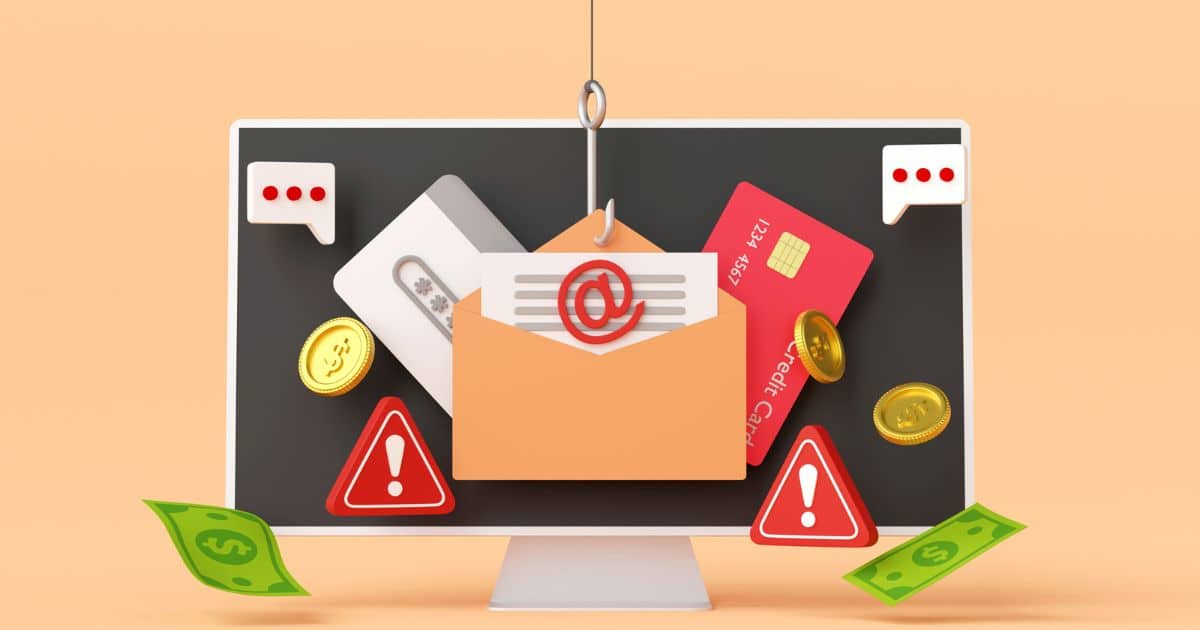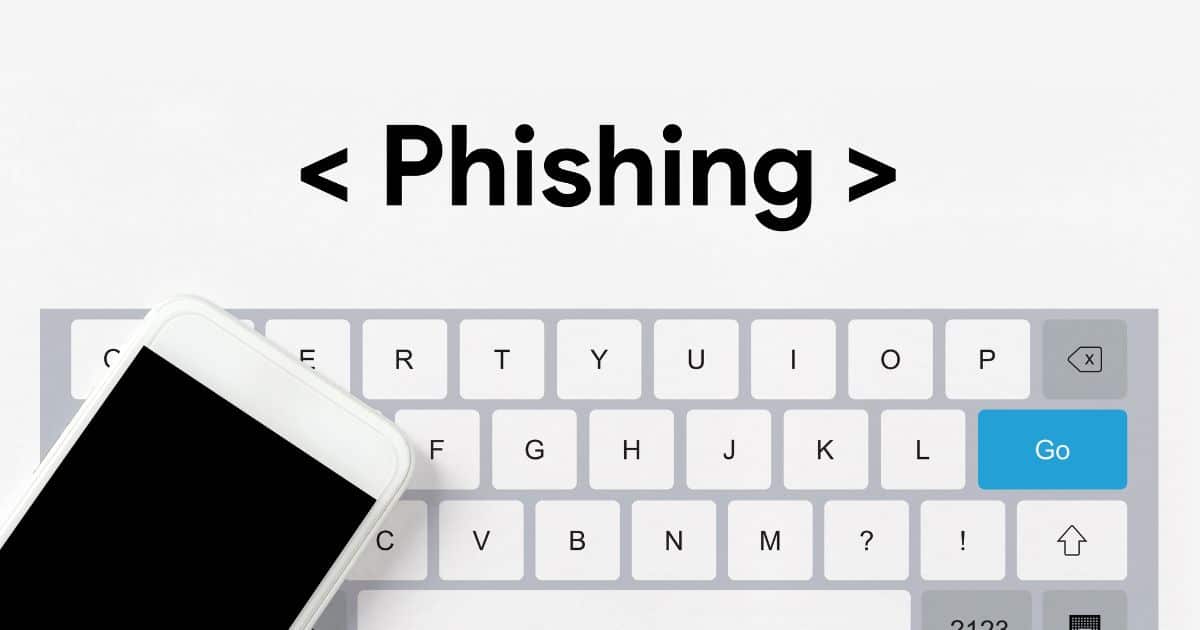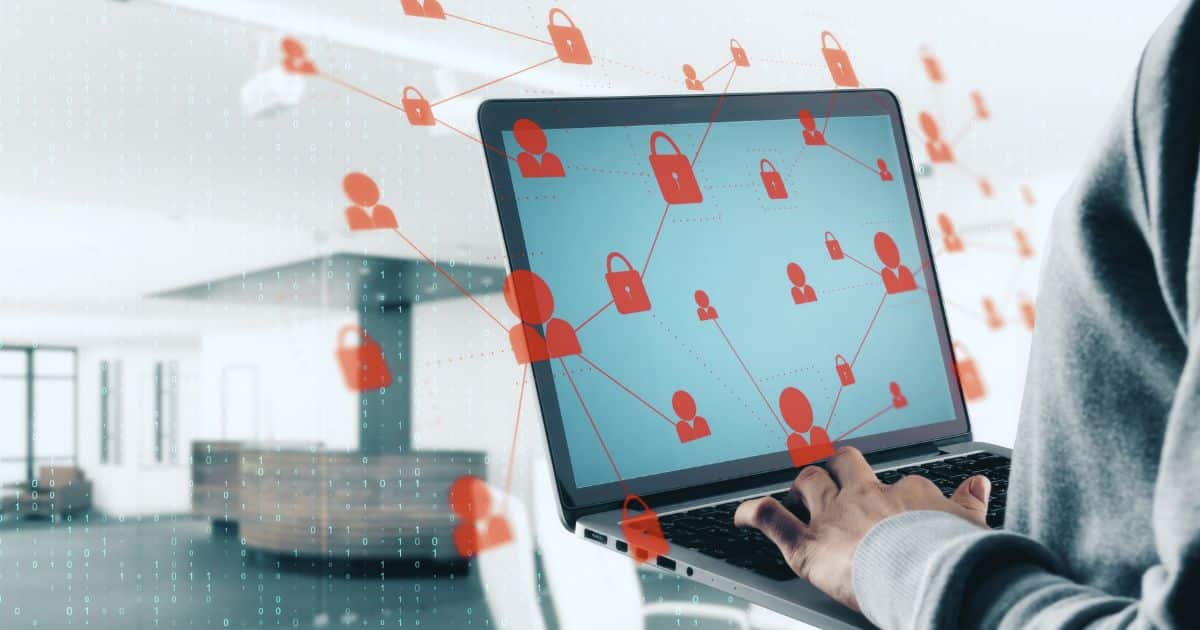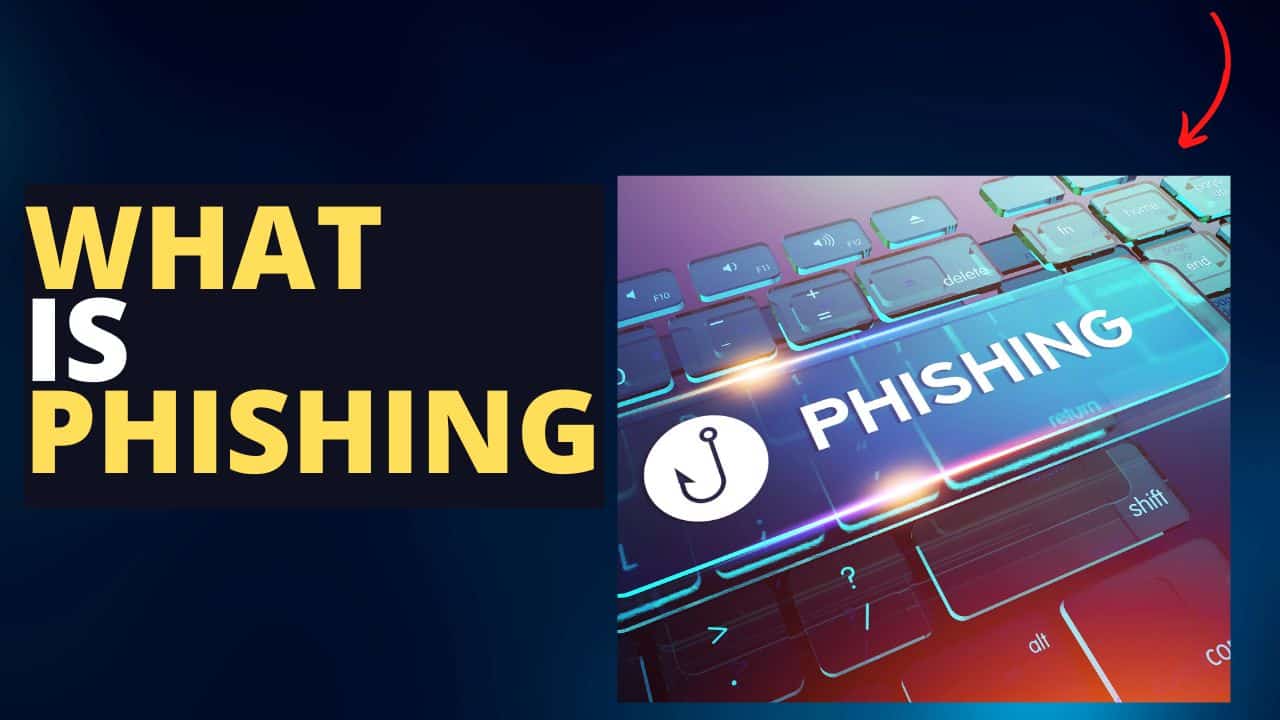What is Phishing? Everything you need to know to protect yourself from scammer's
Phishing is an online scam that targets individuals by attempting to acquire sensitive information such as usernames, passwords, and credit card details. This is done through deceptive emails or websites that appear legitimate but are designed to trick victims into entering their personal information.
Phishing attacks have become increasingly sophisticated, with scammers using tactics such as social engineering and fake login pages to access confidential data. They may also use email addresses similar to those of trusted organizations in a phishing attempt to trick recipients into divulging their credentials.
To protect yourself from phishing scams, always verify the authenticity of emails or websites requesting your personal information and check for spelling errors or discrepancies in branding and domain names. Additionally, never click on links within suspicious emails or enter sensitive data on unsecured websites. By staying vigilant and taking proactive measures against phishing attacks, you can help keep your personal information safe from scammers.
If you want free protection that can help, check out our article on Bitdefender Traffic light. Still, we recommend using Bitdefender Total Security Anti-Virus for a complete Virus and Malware protection package. With 24 years of experience in IT and 16 working in Network Security, this is the Anti-Virus package I have used for the last decade.
You may also like to check our related article on Social Engineering
How Phishing Works
The most common form of phishing is through email, where attackers will send fake emails pretending to be from legitimate companies like banks or social media sites. These emails often contain links that lead to fake login pages designed to steal your credentials.
Once the attacker has your login details, they can use them to access your accounts and steal personal information, money, or even identity. Phishing can also come in the form of phone calls or text messages, known as Smishing (SMS phishing), which are becoming more prevalent with mobile devices being widely used.

Phishing attacks rely on exploiting human psychology and trust rather than technical vulnerabilities. Attackers use social engineering tactics to create a sense of urgency and fear in their victims to get them to act quickly without thinking things through carefully. Therefore individuals and businesses must stay vigilant and aware of the latest phishing techniques to protect themselves from falling victim.
Phishing Examples
Phishing is a cyber-attack where scammers attempt to steal personal and sensitive information from individuals by impersonating legitimate sources. Phishing attacks can come in different forms, such as email, instant messaging, or even phone calls. These scams are designed to look like they are coming from trusted sources like banks, government agencies, or well-known companies.
One example of a phishing scam is a fake bank email. Scammers send an email that looks like it's coming from your bank, asking you to click on a link and enter your login credentials to update your account information. In reality, the link takes you to a fake website that looks identical to the real one but is controlled by attackers who can then steal your login information.

Another common phishing scam involves receiving an urgent message from a government agency claiming an issue with your taxes or social security number. The message will typically ask for personal information such as your full name, date of birth, and social security number, which can be used for identity theft. It's important to always verify the source of any message before sharing any personal information online.
Types of Phishing Attacks
Attackers commonly use several types of phishing attacks. One common type is spear-phishing, which targets specific individuals or organizations with personalized messages designed to appear legitimate. This more targeted phishing attack often uses social engineering tactics to gain trust and manipulate victims.
Another type of phishing attack is whaling, which targets high-profile individuals such as executives or government officials. These spear phishing attacks may be more sophisticated than typical phishing attempts and can involve the creation of fake websites or emails that mimic legitimate sources to steal sensitive data.
Finally, there are clone phishing attacks, where attackers create replicas of legitimate emails or websites to steal personal and financial information from unsuspecting users. In these attacks, hackers often add malicious links or attachments that can infect a victim's device with malware if clicked on. Individuals and organizations must remain vigilant against all phishing attacks to protect their personal and confidential information from falling into the wrong hands.
What Is a Phishing Kit?
Phishing is a cyber attack that targets individuals or organizations to steal sensitive information such as passwords, credit card details, and personal identification numbers (PINs). It often involves sending fraudulent emails or text messages that appear to come from legitimate sources but are designed to trick recipients into providing their confidential data. Phishing kits are tools used by cybercriminals to create convincing phishing websites or emails.
Phishing kits typically contain pre-written code, graphics, templates, and other resources needed to mimic real websites or brands. They allow attackers with little technical skill to easily create fake login pages for popular services like banking and social media platforms. These pages often have URLs that closely resemble legitimate ones, making them difficult for users to differentiate from genuine sites.

Once a victim enters their login credentials on a phishing website or site created using a kit, the information is sent directly to the attacker's server, which can be used for malicious purposes such as identity theft and financial fraud. Phishing kits have become popular among cybercriminals due to their ease of use and effectiveness in bypassing security measures put in place by organizations.
The Ponemon 2021 Cost of Phishing Study
The Ponemon 2021 Cost of Phishing Study provides insight into how successful phishing attacks can impact organizations across industries. The study surveyed over 600 IT security professionals and found that the average cost of a successful phishing attack was $1.6 million for large companies and $383,000 for small to medium-sized businesses. Additionally, the study revealed that it takes an average of 77 days to detect and contain a phishing attack.
These findings highlight the importance of investing in effective cybersecurity measures such as employee training programs and advanced threat detection technology to prevent costly data breaches from phishing attacks. To see the impact of a data breach, look at this IBM study on data breaches. Additionally, as remote work continues to be the norm for many organizations worldwide, businesses must take proactive steps towards securing their sensitive information against these evolving threats.
How can my Company Increase its Phishing Awareness?
One approach to increase phishing awareness in your company is to provide regular training sessions that cover the latest phishing techniques and how to spot them. These user training sessions should be interactive and engaging so employees can learn from real-life examples of phishing attempts. Another effective strategy is conducting simulated phishing attacks on employees periodically - this will help you identify areas where employees might need additional training.

It's also essential to establish clear policies around email security so that all staff members know what actions to take if they receive a suspicious message. Examples of such procedures include encouraging employees not to click on links or download attachments from unknown sources and never share their login credentials with anyone else under any circumstances. Educating your team about these best practices for identifying phishing scams will reduce the likelihood of successful attacks and protect your company's valuable assets.
How to Spot a Phishing Email
The most common way for hackers to do this is through phishing emails. These emails are designed to look like they come from legitimate sources such as banks, government agencies or big companies.
One surefire way to spot a phishing email is by looking at the sender's email address. Often, the email address of anti-phishing will be slightly different than the official address of the company it claims to be from. Another clue is that phishing emails often use urgent language and ask you to take immediate action. In addition, they may threaten consequences if you don't comply with their request.
It's also important to look out for suspicious links in these emails. Before clicking on any link, hover your mouse over it and check if it leads you to an unfamiliar website. If so, do not click on it! Finally, remember that reputable companies never ask for confidential information via email – so if an email asks you for your password or other personal details, consider it a red flag and delete it immediately!
Suppose you suspect that you have fallen victim to a phishing scam. In that case, acting quickly by changing your passwords and notifying your bank or credit card company about any unauthorized transactions is essential. You should also report the incident to the relevant authorities, such as the Federal Trade Commission (FTC) or Internet Crime Complaint Center (IC3). You can protect yourself from phishing attacks by staying vigilant and taking proactive measures.
Business Email Compromise Examples
Cyber attacks involve fraudulent emails, text messages or websites to trick individuals into disclosing sensitive information such as passwords, bank account details, and credit card information. These attacks are often carried out by scammers who create fake websites or send deceptive emails posing as legitimate businesses or organizations.
One common form of phishing is business email compromise (BEC), which involves an attacker impersonating a company-level executive to convince employees to transfer money or disclose sensitive information. One example of BEC occurred in 2019 when a scammer impersonated the CEO of one of Japan's largest media companies. The attacker convinced an employee to transfer $29 million in funds to a fraudulent account.

Another example is the 2016 BEC attack on a network company, where attackers used spear-phishing techniques to trick employees into transferring $46.7 million over several months. This incident highlights the importance for businesses and their employees to remain vigilant against these attacks and implement robust security protocols such as two-factor authentication and regular employee training on cybersecurity best practices.
I found this helpful PDF from the UK NCSC on the BEC Business Email Compromise, which you can view and download. It has some handy tips on making yourself harder to target and tell-tale signs of phishing attacks.
A Strange or Mismatched Sender Address
One common tactic they use is to make the sender's address appear strange or mismatched. For example, instead of using a company's official email domain, they might use a variation or a completely different one.
This can confuse recipients who may not immediately notice the discrepancy and assume that the text message or email is legitimate. Scammers often use this tactic to pose as trusted companies, such as banks, social media platforms, or online retailers. By making it seem like the message comes from a reputable source, they increase the chances that someone will fall for their scam.
To avoid falling victim to phishing attacks, it's important to always double-check the sender's address before clicking on any links or sharing any information. Likewise, if something seems off or suspicious about an email, it's best to err on caution and delete it without engaging with its contents.
Malicious Web Links
Malicious web links can be hazardous and cause serious harm. Cybercriminals use these links to infect computers with malware or viruses. Once a user clicks on the malicious link, the malware installs itself on their computer without their knowledge. This can lead to identity theft and financial loss.

To protect yourself from malicious web links and phishing scams, it is essential to exercise caution when clicking on unknown links. Always verify the sender's email address before responding or clicking on any links within the message. Additionally, ensure your computer is equipped with up-to-date security software and regularly update your passwords for all online accounts.
Fraudulent Data Entry Forms
Fraudulent data entry forms are an example of phishing scams that trick users into filling out sensitive information on fake web pages.
These data entry forms are designed to look like real ones to deceive users into submitting their personal information. However, once the user enters their details and hits submit, the scammers can access their confidential data, which can be used for identity theft or sold on the black market.
To avoid falling victim to fraudulent data entry forms, it is crucial to always verify the website URL before entering any sensitive personal or financial information therein. Checking for secure connections (HTTPS) and authentic certificates can also help identify legitimate websites instead of fake ones created by hackers. Lastly, it is best practice to only click on links embedded within emails from unknown senders or download attachments you weren't expecting.
Phishing Defences: why you need a Multi-layered Approach
The consequences of falling prey to a phishing attack can be severe and result in identity theft, financial loss or reputational damage.
A multi-layered approach is necessary for effective phishing defence because it involves using different measures that complement one another in detecting and preventing email phishing attacks. For example, one layer could be training employees on best practices for identifying and reporting suspicious emails or websites. Another layer could involve implementing technical controls like email filtering systems that block malicious links or attachments before they reach the user's inbox. A third layer is setting up two-factor authentication procedures that add an extra security level when accessing sensitive data.

Multiple layers of protection are essential because no single method can guarantee 100% safety against phishing attacks since cybercriminals constantly evolve their techniques to circumvent existing defences. Therefore, it's imperative to have a comprehensive defence strategy that includes training users on what to look out for and incorporating technological solutions that help prevent these types of attacks from succeeding.
Case study: How Multi-layered Phishing Mitigations Defended against Dridex Malware
Recently, phishing attacks have become more sophisticated and challenging to detect. One example is the Dridex malware, used in multiple high-profile phishing campaigns. Dridex targets banking credentials and personal information by infecting victims' computers through email attachments or links.
Multi-layered mitigations are necessary to defend against Dridex and other advanced phishing attacks. These mitigations include email spam filters that can identify suspicious emails based on content and sender reputation and endpoint protection software that detects malicious files before they can execute on a system. In addition, these network-based monitoring systems can see abnormal traffic patterns associated with malware infections and employee education programs that teach individuals how to recognize and avoid common phishing tactics.
The effectiveness of these mitigations was demonstrated in a case study where an organization successfully defended against a Dridex campaign using several layers of defence. By leveraging comprehensive detection mechanisms across multiple stages of an attack lifecycle, organizations can significantly reduce the risk posed by today's sophisticated threat actors.
Free Phishing Awareness Kit
They do this by posing as a legitimate entity, usually a well-known brand or organization, through email, text messages, or social media platforms. However, their private information is compromised once the user clicks on the link in these messages or provides their bank details on fake websites that look similar to the original ones.
The consequences of falling for phishing scams can be disastrous for individuals and organizations alike. To combat this threat effectively, security experts have developed various awareness materials such as posters, videos, and guides that educate users about how to spot and avoid phishing attacks. The Phishing Awareness Kit is one such tool that provides resources to help users identify red flags of various phishing messages and attempts.

Check out this PDF from the UK NCSC on the BEC Business Email Compromise, which you can view and download. It has some handy tips on making yourself more challenging to target and tell-tale signs of phishing attacks.
Conclusion
In conclusion, phishing is a cybercrime that involves tricking people into giving away their personal information through fraudulent emails, messages, or websites. Cybercriminals use a variety of tactics to make their scams seem legitimate and trustworthy, from posing as well-known institutions to using urgent language to create a sense of panic. However, individuals can protect themselves from phishing attacks in several ways.
Firstly, it's crucial to always verify the sender's email address and domain before clicking on any links or responding to requests for personal information. Additionally, individuals should only give out sensitive data like passwords or social security numbers after confirming the request's legitimacy. It's also important to keep software and antivirus programs up-to-date and regularly check bank statements and credit reports for signs of suspicious activity.
Overall, awareness of the risks associated with phishing is essential in today's digital age. By taking precautions and staying vigilant against these scams, we can help prevent cybercriminals from accessing our sensitive data and compromising our online security.

